Chrysler 2011 Annual Report Download - page 46
Download and view the complete annual report
Please find page 46 of the 2011 Chrysler annual report below. You can navigate through the pages in the report by either clicking on the pages listed below, or by using the keyword search tool below to find specific information within the annual report.-
 1
1 -
 2
2 -
 3
3 -
 4
4 -
 5
5 -
 6
6 -
 7
7 -
 8
8 -
 9
9 -
 10
10 -
 11
11 -
 12
12 -
 13
13 -
 14
14 -
 15
15 -
 16
16 -
 17
17 -
 18
18 -
 19
19 -
 20
20 -
 21
21 -
 22
22 -
 23
23 -
 24
24 -
 25
25 -
 26
26 -
 27
27 -
 28
28 -
 29
29 -
 30
30 -
 31
31 -
 32
32 -
 33
33 -
 34
34 -
 35
35 -
 36
36 -
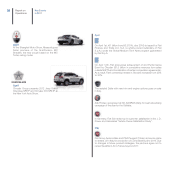 37
37 -
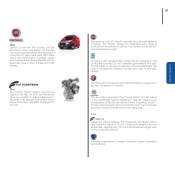 38
38 -
 39
39 -
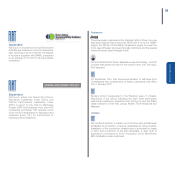 40
40 -
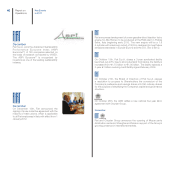 41
41 -
 42
42 -
 43
43 -
 44
44 -
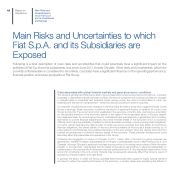 45
45 -
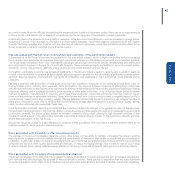 46
46 -
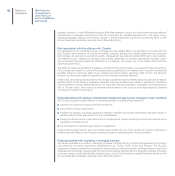 47
47 -
 48
48 -
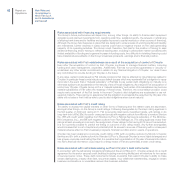 49
49 -
 50
50 -
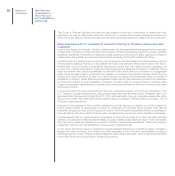 51
51 -
 52
52 -
 53
53 -
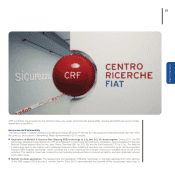 54
54 -
 55
55 -
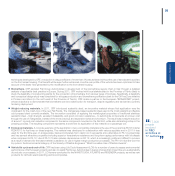 56
56 -
 57
57 -
 58
58 -
 59
59 -
 60
60 -
 61
61 -
 62
62 -
 63
63 -
 64
64 -
 65
65 -
 66
66 -
 67
67 -
 68
68 -
 69
69 -
 70
70 -
 71
71 -
 72
72 -
 73
73 -
 74
74 -
 75
75 -
 76
76 -
 77
77 -
 78
78 -
 79
79 -
 80
80 -
 81
81 -
 82
82 -
 83
83 -
 84
84 -
 85
85 -
 86
86 -
 87
87 -
 88
88 -
 89
89 -
 90
90 -
 91
91 -
 92
92 -
 93
93 -
 94
94 -
 95
95 -
 96
96 -
 97
97 -
 98
98 -
 99
99 -
 100
100 -
 101
101 -
 102
102 -
 103
103 -
 104
104 -
 105
105 -
 106
106 -
 107
107 -
 108
108 -
 109
109 -
 110
110 -
 111
111 -
 112
112 -
 113
113 -
 114
114 -
 115
115 -
 116
116 -
 117
117 -
 118
118 -
 119
119 -
 120
120 -
 121
121 -
 122
122 -
 123
123 -
 124
124 -
 125
125 -
 126
126 -
 127
127 -
 128
128 -
 129
129 -
 130
130 -
 131
131 -
 132
132 -
 133
133 -
 134
134 -
 135
135 -
 136
136 -
 137
137 -
 138
138 -
 139
139 -
 140
140 -
 141
141 -
 142
142 -
 143
143 -
 144
144 -
 145
145 -
 146
146 -
 147
147 -
 148
148 -
 149
149 -
 150
150 -
 151
151 -
 152
152 -
 153
153 -
 154
154 -
 155
155 -
 156
156 -
 157
157 -
 158
158 -
 159
159 -
 160
160 -
 161
161 -
 162
162 -
 163
163 -
 164
164 -
 165
165 -
 166
166 -
 167
167 -
 168
168 -
 169
169 -
 170
170 -
 171
171 -
 172
172 -
 173
173 -
 174
174 -
 175
175 -
 176
176 -
 177
177 -
 178
178 -
 179
179 -
 180
180 -
 181
181 -
 182
182 -
 183
183 -
 184
184 -
 185
185 -
 186
186 -
 187
187 -
 188
188 -
 189
189 -
 190
190 -
 191
191 -
 192
192 -
 193
193 -
 194
194 -
 195
195 -
 196
196 -
 197
197 -
 198
198 -
 199
199 -
 200
200 -
 201
201 -
 202
202 -
 203
203 -
 204
204 -
 205
205 -
 206
206 -
 207
207 -
 208
208 -
 209
209 -
 210
210 -
 211
211 -
 212
212 -
 213
213 -
 214
214 -
 215
215 -
 216
216 -
 217
217 -
 218
218 -
 219
219 -
 220
220 -
 221
221 -
 222
222 -
 223
223 -
 224
224 -
 225
225 -
 226
226 -
 227
227 -
 228
228 -
 229
229 -
 230
230 -
 231
231 -
 232
232 -
 233
233 -
 234
234 -
 235
235 -
 236
236 -
 237
237 -
 238
238 -
 239
239 -
 240
240 -
 241
241 -
 242
242 -
 243
243 -
 244
244 -
 245
245 -
 246
246 -
 247
247 -
 248
248 -
 249
249 -
 250
250 -
 251
251 -
 252
252 -
 253
253 -
 254
254 -
 255
255 -
 256
256 -
 257
257 -
 258
258 -
 259
259 -
 260
260 -
 261
261 -
 262
262 -
 263
263 -
 264
264 -
 265
265 -
 266
266 -
 267
267 -
 268
268 -
 269
269 -
 270
270 -
 271
271 -
 272
272 -
 273
273 -
 274
274 -
 275
275 -
 276
276 -
 277
277 -
 278
278 -
 279
279 -
 280
280 -
 281
281 -
 282
282 -
 283
283 -
 284
284 -
 285
285 -
 286
286 -
 287
287 -
 288
288 -
 289
289 -
 290
290 -
 291
291 -
 292
292 -
 293
293 -
 294
294 -
 295
295 -
 296
296 -
 297
297 -
 298
298 -
 299
299 -
 300
300 -
 301
301 -
 302
302 -
 303
303 -
 304
304 -
 305
305 -
 306
306 -
 307
307 -
 308
308 -
 309
309 -
 310
310 -
 311
311 -
 312
312 -
 313
313 -
 314
314 -
 315
315 -
 316
316 -
 317
317 -
 318
318 -
 319
319 -
 320
320 -
 321
321 -
 322
322 -
 323
323 -
 324
324 -
 325
325 -
 326
326 -
 327
327 -
 328
328 -
 329
329 -
 330
330 -
 331
331 -
 332
332 -
 333
333 -
 334
334 -
 335
335 -
 336
336 -
 337
337 -
 338
338 -
 339
339 -
 340
340 -
 341
341 -
 342
342 -
 343
343 -
 344
344 -
 345
345 -
 346
346 -
 347
347 -
 348
348 -
 349
349 -
 350
350 -
 351
351 -
 352
352 -
 353
353 -
 354
354 -
 355
355 -
 356
356 -
 357
357 -
 358
358 -
 359
359 -
 360
360 -
 361
361 -
 362
362 -
 363
363 -
 364
364 -
 365
365 -
 366
366 -
 367
367 -
 368
368 -
 369
369 -
 370
370 -
 371
371 -
 372
372 -
 373
373 -
 374
374 -
 375
375 -
 376
376 -
 377
377 -
 378
378 -
 379
379 -
 380
380 -
 381
381 -
 382
382 -
 383
383 -
 384
384 -
 385
385 -
 386
386 -
 387
387 -
 388
388 -
 389
389 -
 390
390 -
 391
391 -
 392
392 -
 393
393 -
 394
394 -
 395
395 -
 396
396 -
 397
397 -
 398
398 -
 399
399 -
 400
400 -
 401
401 -
 402
402
 |
 |

45
economic trends. Given the difficulty in predicting the magnitude and duration of economic cycles, there can be no assurances as
to future trends in the demand for or supply of products sold by the Group in any of the markets in which it operates.
Additionally, even in the absence of slow growth or recession, other economic circumstances – such as increases in energy prices,
fluctuations in prices of raw materials or contractions in infrastructure spending – could have negative consequences for the industry
in which the Group operates and, together with the other factors referred to previously, could have a material adverse effect on the
Group’s business prospects, earnings and/or financial position.
Risk associated with the high level of competition and cyclicality of the automobile industry
Substantially all of the Group’s revenues are generated in the automobile industry, which is highly competitive and encompasses
the production and distribution of passenger cars, light commercial vehicles and the related components and production systems.
The Group faces competition from other international passenger car and light commercial vehicle manufacturers and distributors
and components suppliers in Europe, North and Latin America. These markets are highly competitive in terms of product quality,
innovation, pricing, fuel economy, reliability, safety, customer service and financial services offered.
Competition, particularly in pricing, has increased significantly in the Group’s industry sector in recent years. In addition, partly as
a result of the contraction in demand for automobiles, global production capacity for the car industry significantly exceeds current
demand. This overcapacity, combined with high levels of competition and weakness of major economies, could intensify pricing
pressures.
Fiat has a relatively high proportion of fixed costs and may have significant limitations on the ability to reduce fixed costs by
closing facilities and/or reducing labor expenses. Fiat’s competitors may respond to these conditions by attempting to make their
vehicles more attractive or less expensive to customers by adding vehicle enhancements, providing subsidized financing or leasing
programs, offering option package discounts, price rebates or other sales incentives, or by reducing vehicle prices in certain
markets. In addition, manufacturers in countries which have lower production costs have announced that they intend to export
lower-cost automobiles to established markets. These actions have had, and could continue to have, a negative impact on Fiat’s
vehicle pricing, market share, and operating results. Offering desirable vehicles that appeal to customers can mitigate the risks of
stiffer price competition, while offer of vehicles that are perceived to be less desirable (whether in terms of price, quality, styling,
safety, or other attributes) can exacerbate these risks.
In the Automobiles business, sales to end customers are cyclical and subject to changes in the general condition of the economy,
the readiness of end customers to buy and their ability to obtain financing and the possible introduction of measures by governments
to stimulate demand. The sector is also subject to constant renewal of the product offering through frequent launches of new
models. A negative trend in the automobiles business could have a material adverse impact on the business prospects, earnings
and/or financial position of the Fiat Group.
Should the Group be unable to adapt effectively to external market conditions, this could have a material adverse effect on its
business prospects, earnings and/or financial position.
Risks associated with the ability to offer innovative products
The success of the Group’s businesses depends, among other things, on their ability to maintain or increase their share in existing
markets and/or to expand into new markets through the development of innovative, high-quality products that provide adequate
profitability. In particular, a failure to develop and offer innovative products that compare favorably to those of the Group’s principal
competitors in terms of price, quality, functionality and features, or delays in bringing strategic new models to market, could result
in reduced market share, having material adverse effects on the Group’s business prospects, earnings and/or financial position.
Risks associated with the policy of targeted industrial alliances
The Group has engaged in the past, and may engage in the future, in significant corporate transactions such as mergers, acquisitions,
joint ventures and restructurings, the success of which is difficult to predict. There can be no assurance that any such significant
corporate transaction which might occur in the future will not encounter administrative, technical, industrial, operational, regulatory,
Report on Operations
